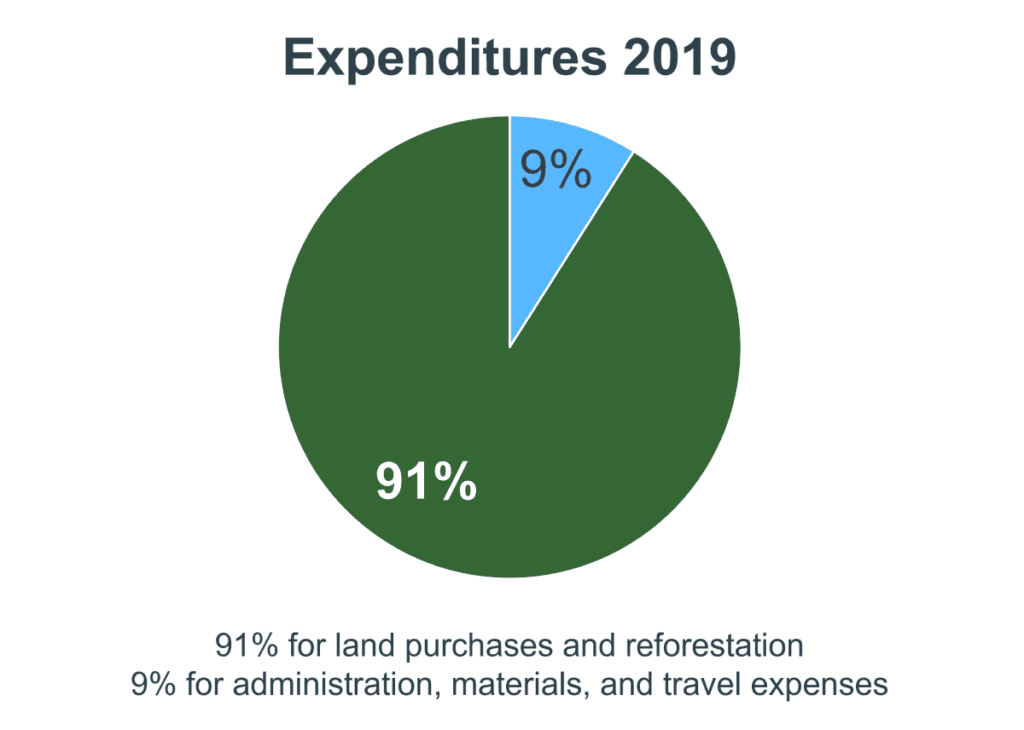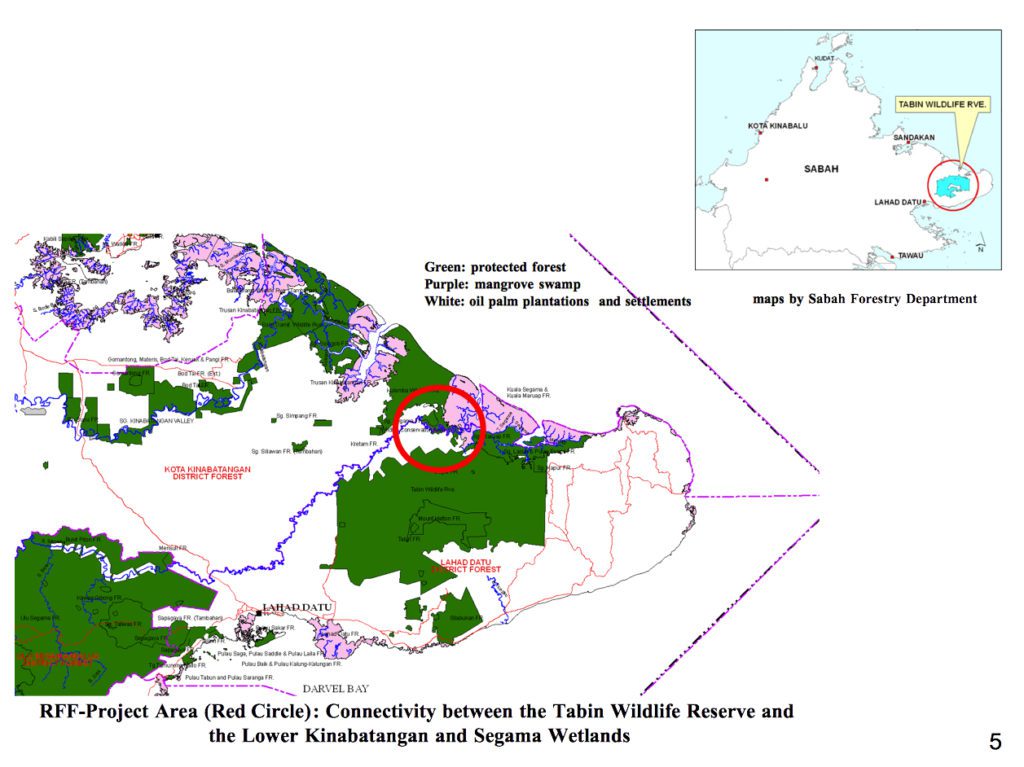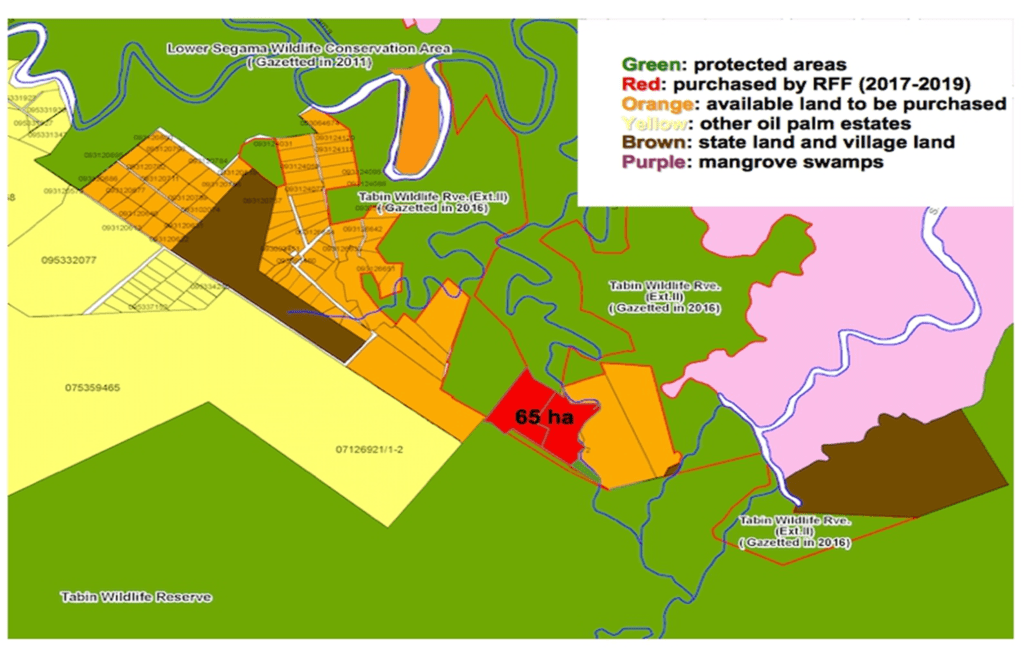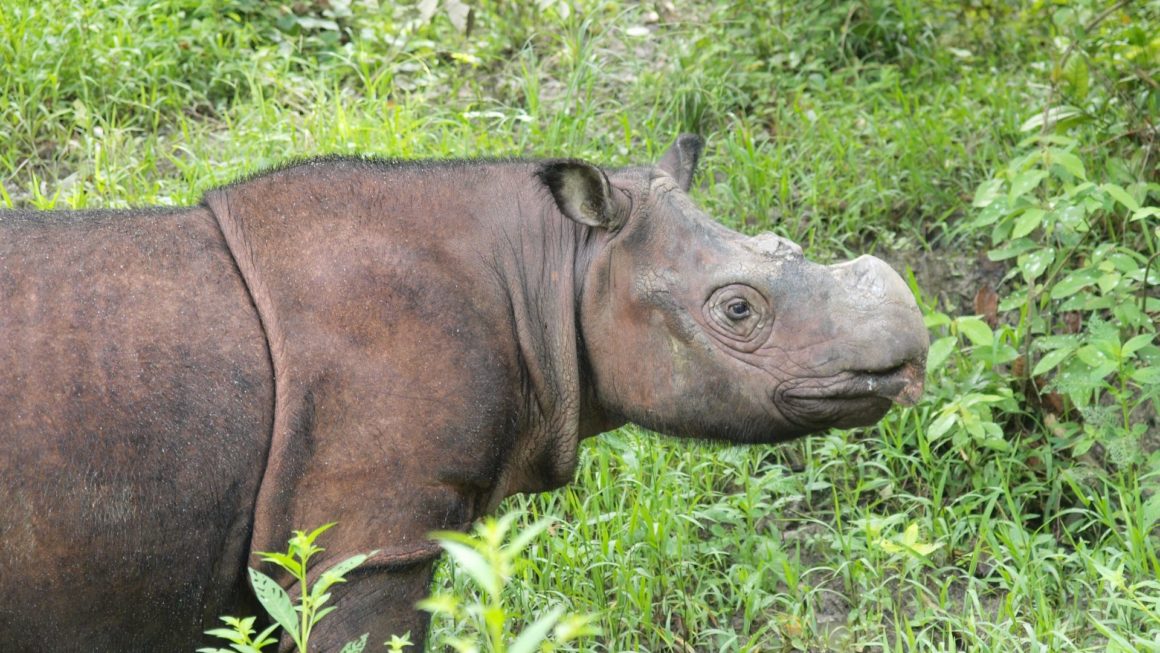Newsletter February 2020
Dear supporting members, sponsors, and interested parties, we would like to wish all our Rhino and Forest Fund (RFF) supporters a Happy New Year, and sincerely thank you for all the funding contributions and the highest amount of donations since our foundation in 2009!

Expenditures 2019: 91% for land purchases and reforestation, 9% for administration, materials, and travel expenses.

The Tabin Wildlife Reserve in Sabah is isolated like an island surrounded by plantations (white) and swamps (pink). The corridor area is circled in red.

In red: areas already acquired by RFF consisting of 15 hectares of forest and 50 hectares of oil palm plantation.
Revenues and expenditures 2019
In 2019, we received €621,200 in donations and used €270,000 before the end of 2019. In January 2020, we purchased oil palm plantation land for another €450,000. Almost all the donations used were directly used for land acquisition to expand the Tabin Wildlife Reserve and for reforestation measures (see chart on the right).
The major breakthrough in 2019
This latest acquisition has expanded our land purchases to a total of 65 hectares (see red area on the map at the bottom right). The area consists of 15 hectares of forest and 50 hectares of oil palm plantations. The diameter is at least 800 meters. The 33 hectares purchased between 2017 and March 2019 have already been merged with the highly protected Tabin Wildlife Reserve. The remaining 32 hectares, whose purchase was only sealed in December 2019, are to follow in the coming months. Incidentally, the acquired plots of land are ideally situated:
With the 65 hectares purchased so far, we have created a link that connects 200,000 hectares of protected areas!
What’s next?
In the current year, we now want to start with the systematic reforestation of the purchased areas and simultaneously launch a scientifically accompanied model project for the renaturation of oil palm plantations.
The project is intended to show how oil palm plantations can best be converted back into a near-natural forest.
Because this is precisely one of the central challenges for the coming decades. At least for anyone serious about stopping species extinction and saving the climate!
In 2020, we also wanted to continue working on expanding protected areas by either lobbying, which has already allowed us to save over 2,500 hectares of key threatened areas “for free” or—where necessary—by direct land acquisition to further expand the corridor.
What we still need
We continue to rely on financial support in 2020:
- The purchased lands need to be reforested, which is only partially financed so far.
- Funding for the research project is not yet secured.
- We need to invest in personnel and infrastructure on-site.
- We plan to establish a ranger team to protect the area from poaching and other destructive activities sustainably.
- There are other privately owned key areas that can only be saved and protected through purchase.
With best wishes for the new year!
Rhino and Forest Fund e.V.,
February 2020



